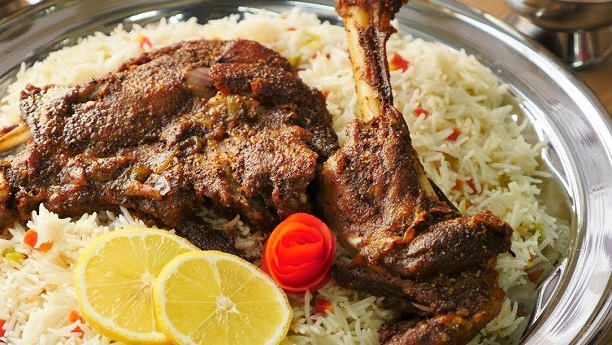
Mandi, a celebrated dish in Saudi Arabian cuisine, encapsulates the essence of tradition, flavor, and hospitality. Rooted in centuries-old culinary practices and steeped in cultural significance, Mandi holds a special place in the hearts and palates of Saudis and food enthusiasts around the world. In this comprehensive exploration, we embark on a gastronomic odyssey to unravel the history, ingredients, and preparation of Mandi, immersing ourselves in the rich tapestry of Saudi Arabian culinary heritage.
History of Mandi: Tracing its Ancient Roots
The origins of Mandi can be traced back to the Arabian Peninsula, where it emerged as a staple dish among Bedouin tribes and nomadic communities. Historically, Mandi was cooked in underground ovens known as “tannours,” where meat would be slow-cooked in a pit over hot coals, imparting a distinct smoky flavor to the dish. Over time, Mandi evolved into a beloved culinary tradition, influenced by trade routes, cultural exchanges, and the agricultural bounty of the region.
Ingredients of Mandi: A Symphony of Aromas and Flavors
The key ingredients of Mandi reflect the bounty of Saudi Arabia’s fertile lands and the artistry of its culinary heritage. While variations exist across regions and households, the essential components of Mandi include:
- Basmati Rice: Known for its fragrant aroma and slender grains, Basmati rice forms the foundation of Mandi, providing a fluffy and aromatic bed for the tender meat.
- Meat: Typically, Mandi features lamb, goat, or chicken as the primary protein, marinated in a blend of spices and seasonings to enhance its flavor and tenderness.
- Spices: Aromatic spices such as cardamom, cinnamon, cloves, bay leaves, and black pepper are used to season the meat and rice, infusing Mandi with its signature fragrance and complexity.
- Clarified Butter (Ghee): Clarified butter, or ghee, is often used to sauté the meat and aromatics, imparting a rich and buttery flavor to the dish.
- Aromatics: Onions, garlic, ginger, and green chilies are commonly used to add depth and complexity to the flavor profile of Mandi.
- Yogurt: Yogurt is often used in the marinade to tenderize the meat and add a subtle tanginess to the dish.
- Nuts and Raisins: Toasted almonds, cashews, or pine nuts, along with plump raisins, are used as garnishes to add texture and sweetness to Mandi.
Preparation of Mandi: Crafting a Feast Fit for Royalty
The preparation of Mandi is a labor of love, requiring patience, skill, and attention to detail. While variations exist in cooking methods and techniques, the general steps involved in preparing Mandi include:
- Marinating the Meat: The meat is marinated in a mixture of yogurt, spices, aromatics, and oil, allowing it to tenderize and absorb the flavors overnight.
- Preparing the Rice: Basmati rice is rinsed and soaked before being parboiled in salted water until partially cooked, then drained and set aside.
- Building the Mandi Pot: A large pot or “madhbi” is lined with banana leaves or parchment paper to create a fragrant base for the dish. The marinated meat is arranged on top of the leaves, and the partially cooked rice is layered over the meat.
- Slow Cooking: The pot is covered with a tight-fitting lid and placed over low heat or hot coals, allowing the meat and rice to cook slowly and absorb the smoky flavors.
- Resting and Serving: Once cooked, the Mandi is allowed to rest, allowing the flavors to meld and intensify. It is then garnished with toasted nuts, raisins, and fresh herbs before being served family-style on a large platter.
Variations of Mandi: Regional Delights and Cultural Expressions
Across Saudi Arabia and the broader Middle East, Mandi is prepared in various regional styles, each reflecting local ingredients, traditions, and culinary preferences. Some popular variations of Mandi include:
- Mandi Laham: A meat-centric version of Mandi, where lamb or goat meat is the star ingredient, celebrated for its bold and robust flavors.
- Mandi Dajaj: A chicken-based version of Mandi, favored for its tender meat and delicate seasoning, often served during festive occasions and family gatherings.
- Mandi Samak: A seafood-inspired variation of Mandi, featuring fresh fish or shrimp as the main protein, celebrated for its light and aromatic flavors.
Conclusion: Savoring the Timeless Tradition of Mandi
In conclusion, Mandi embodies the soul of Saudi Arabian cuisine, offering a tantalizing blend of flavors, aromas, and textures that captivate the senses and nourish the spirit. With its ancient roots, diverse ingredients, and meticulous preparation, Mandi stands as a testament to the rich culinary heritage and cultural diversity of the region. Whether enjoyed as a comforting family meal, a festive feast, or a culinary adventure, Mandi invites us to savor the timeless tradition of communal dining and the simple pleasures of good food shared with loved ones.